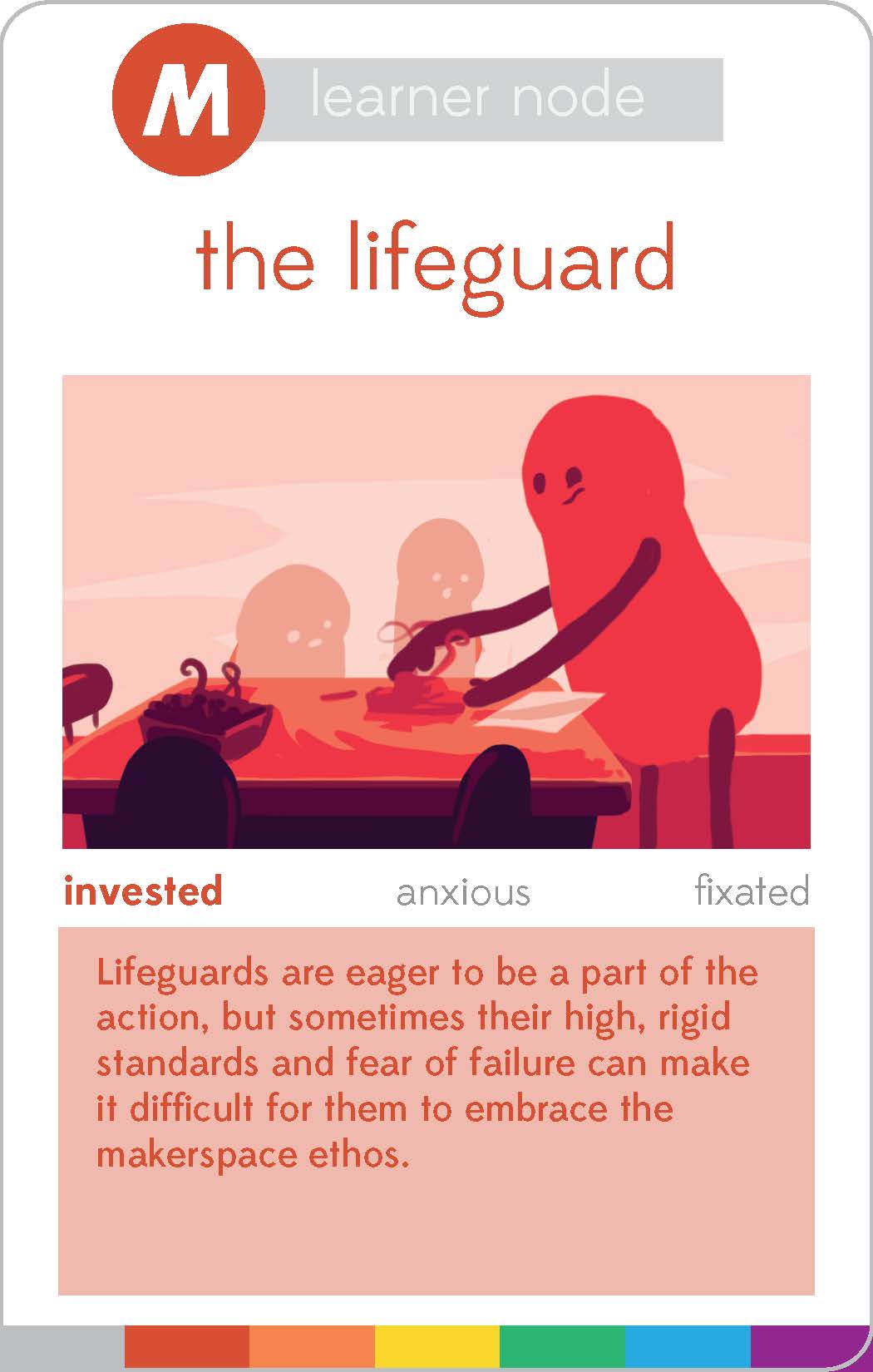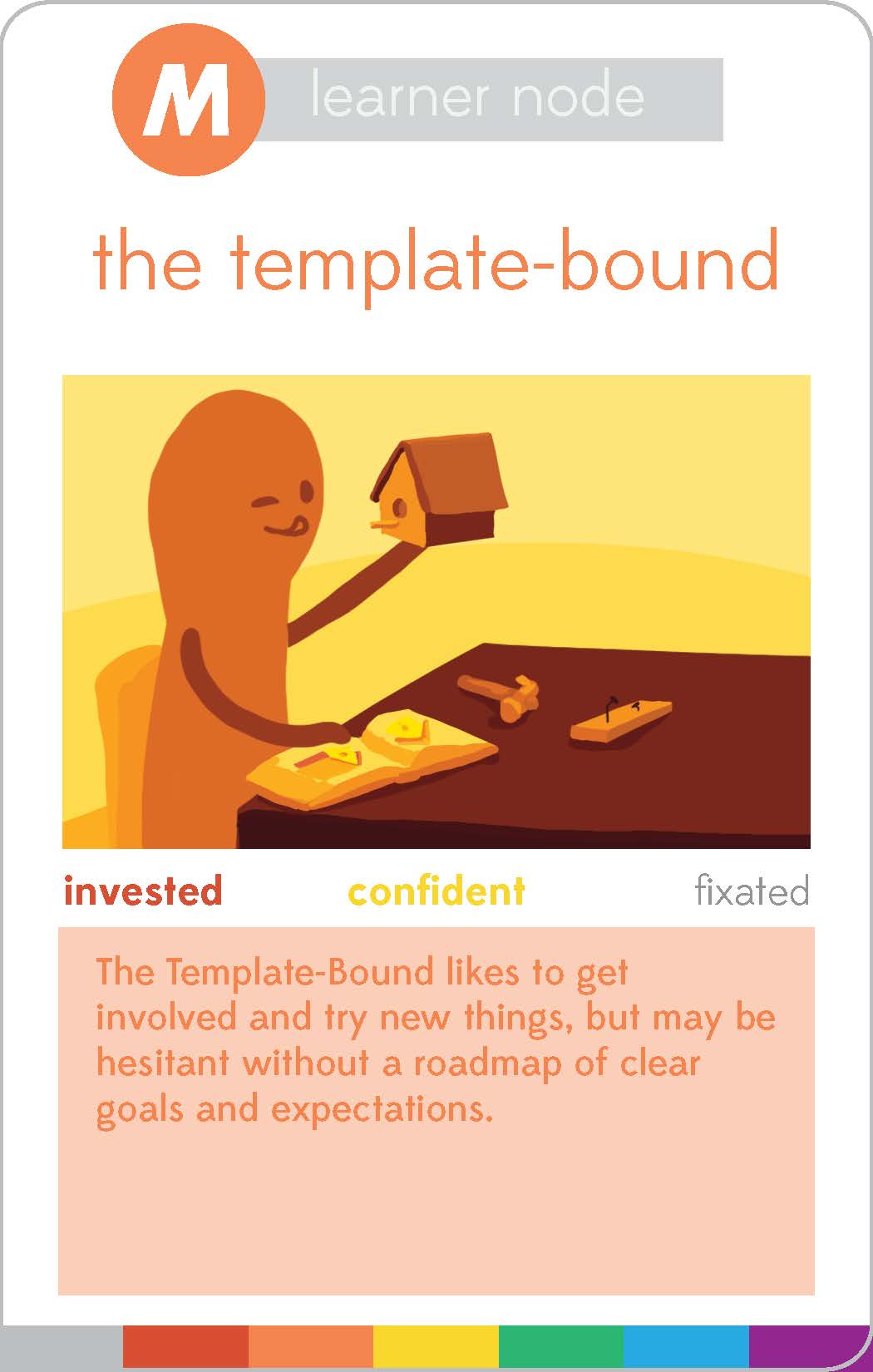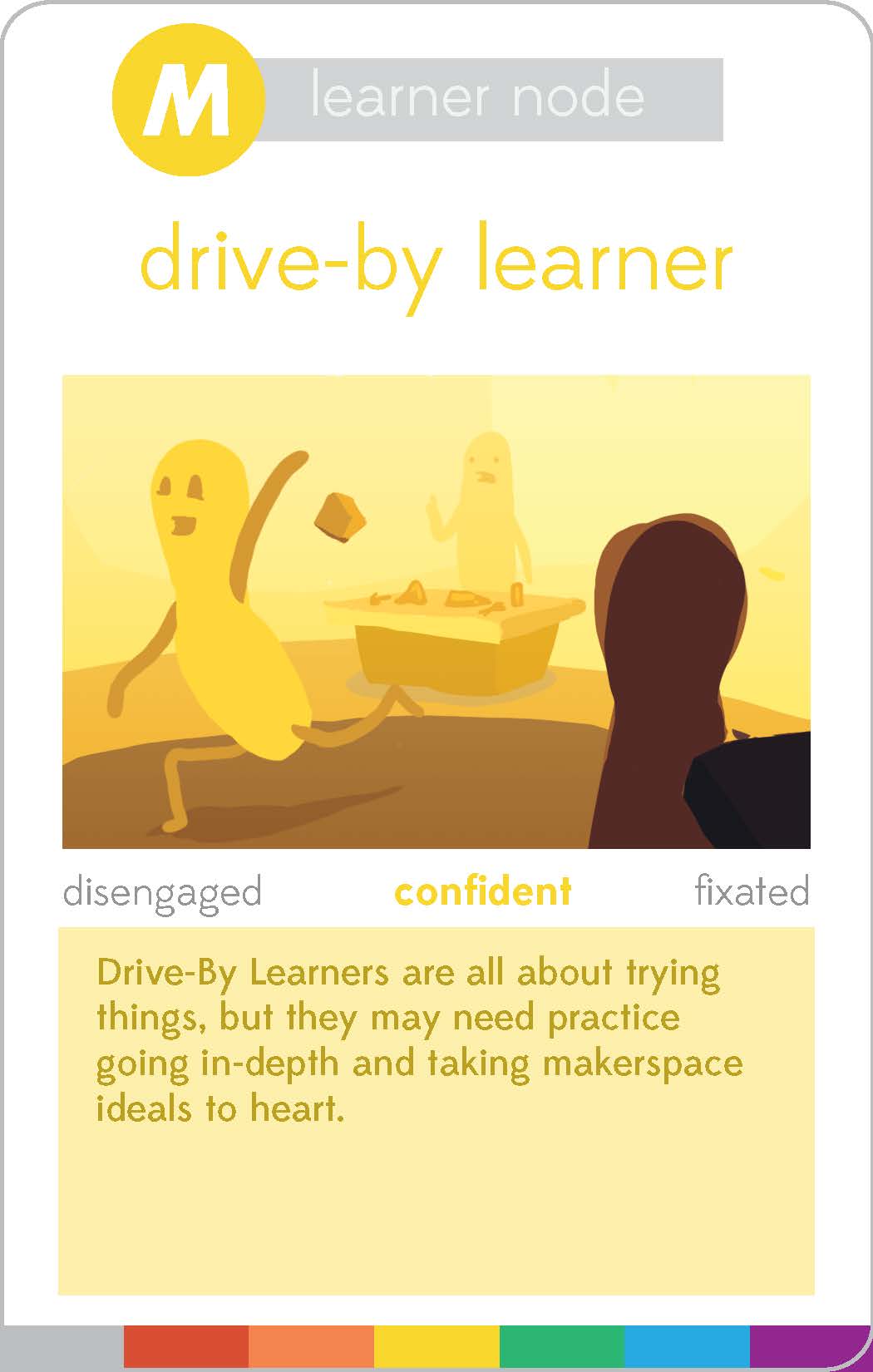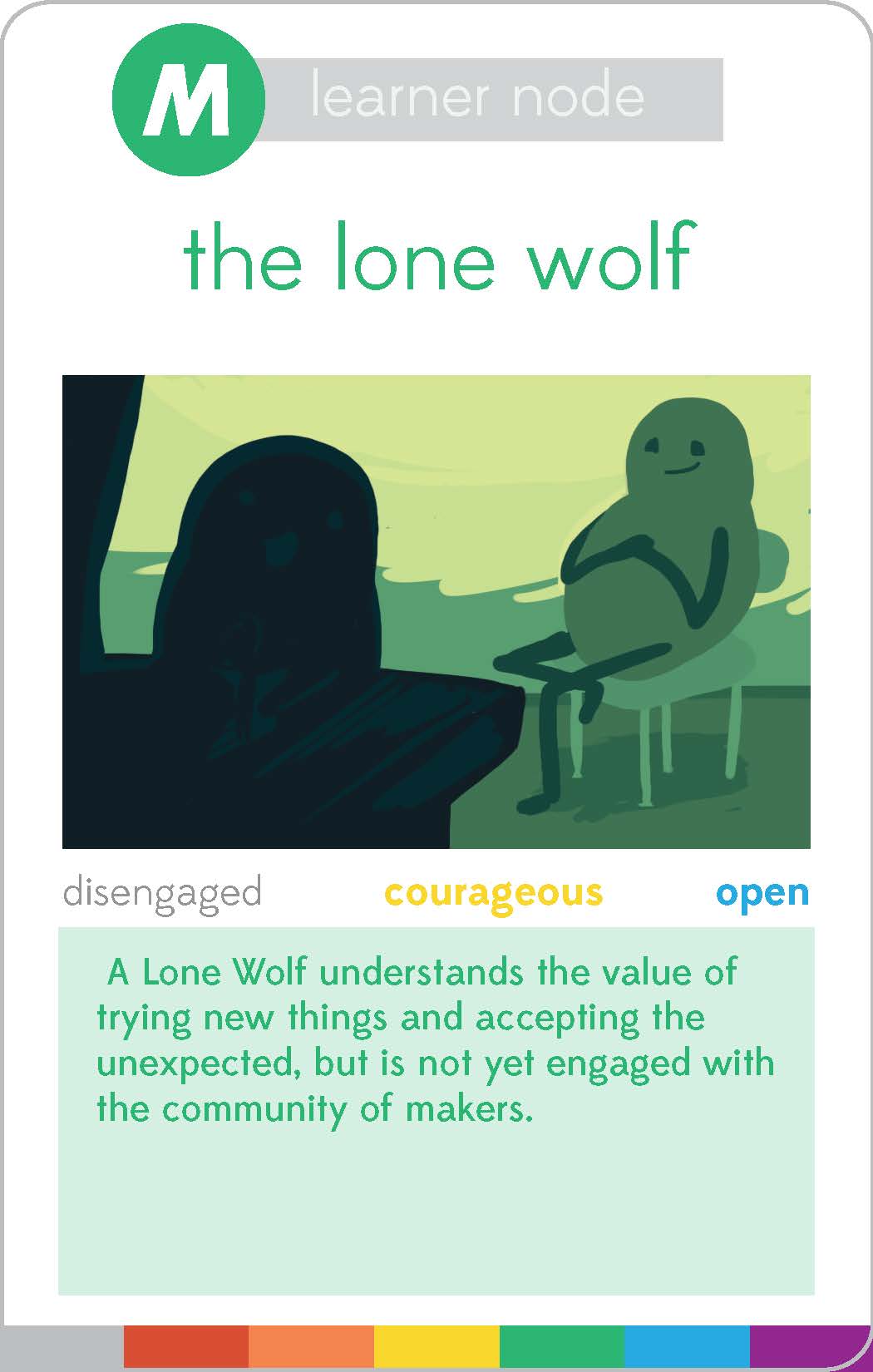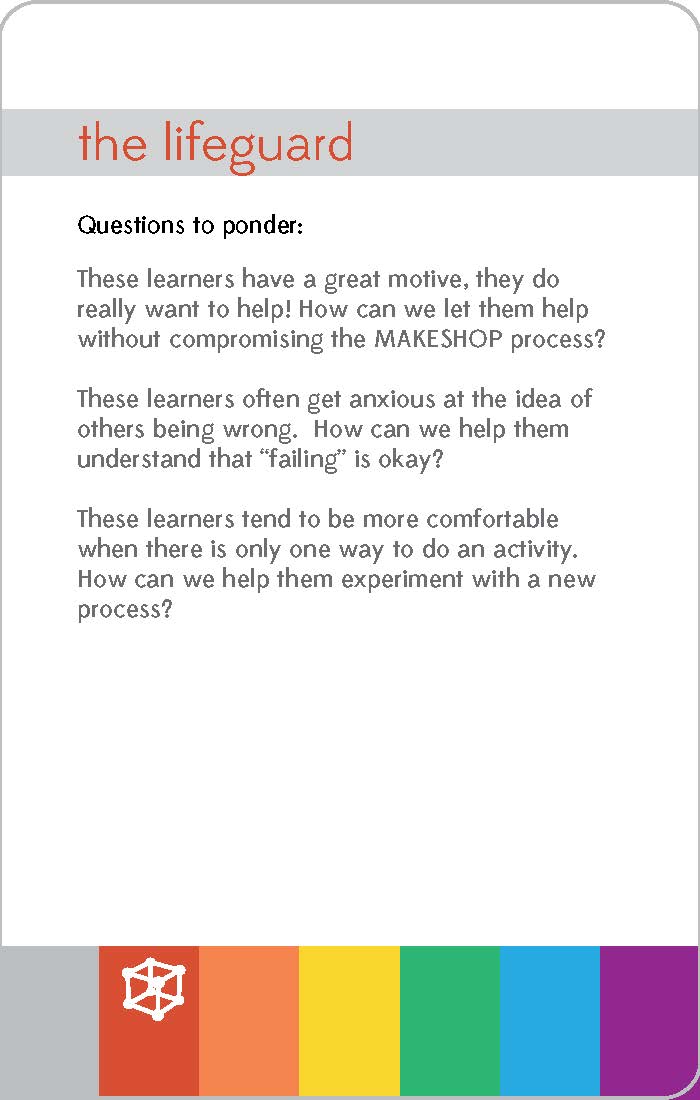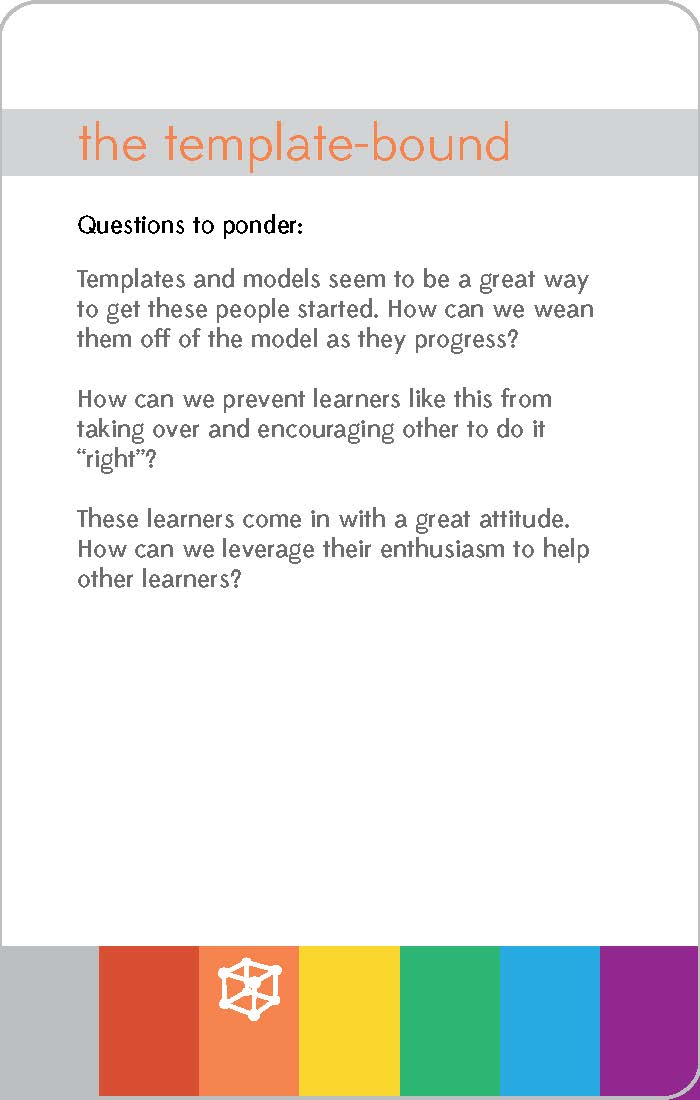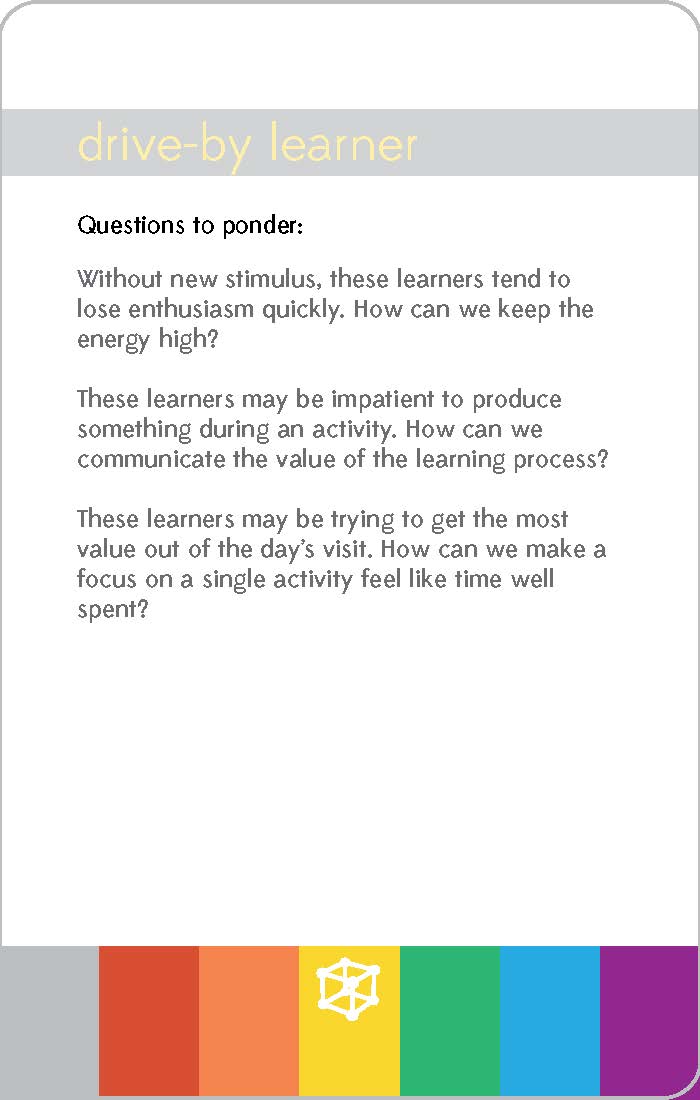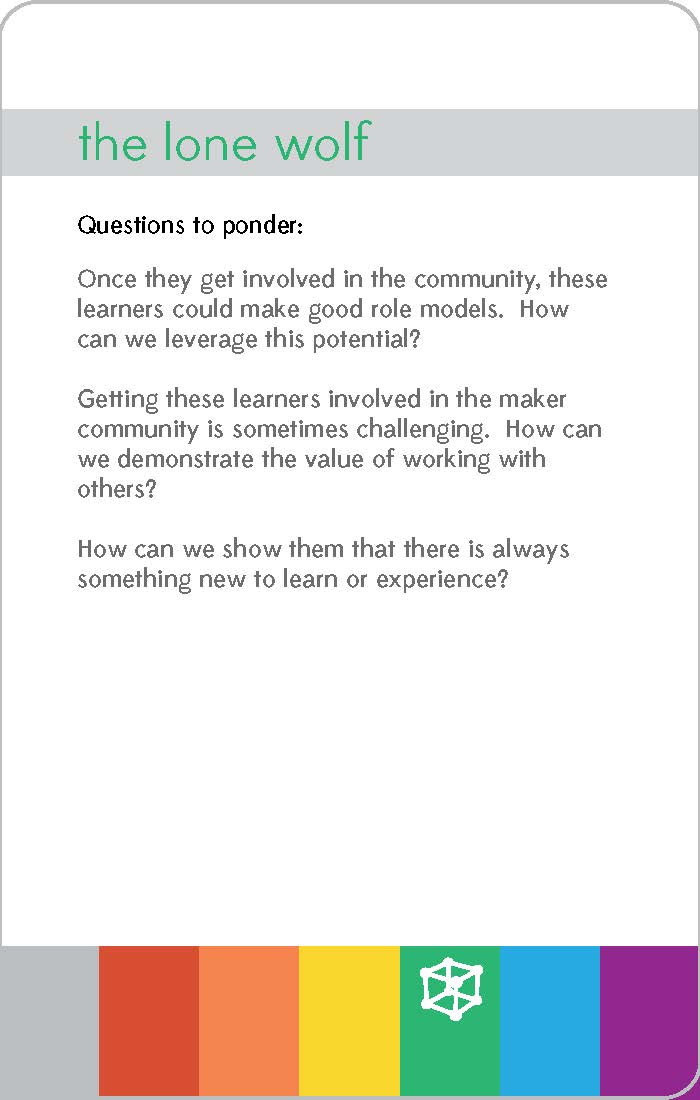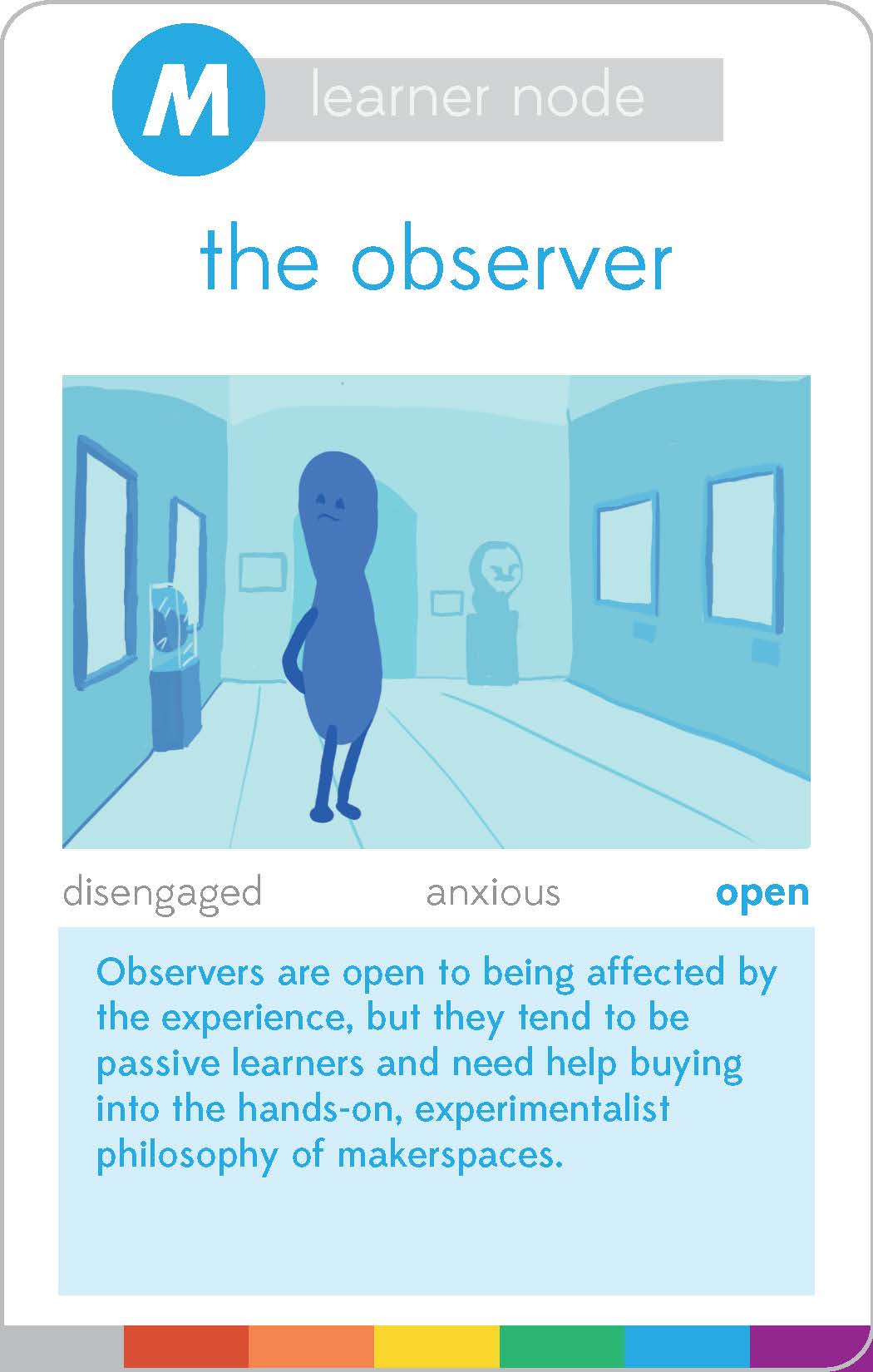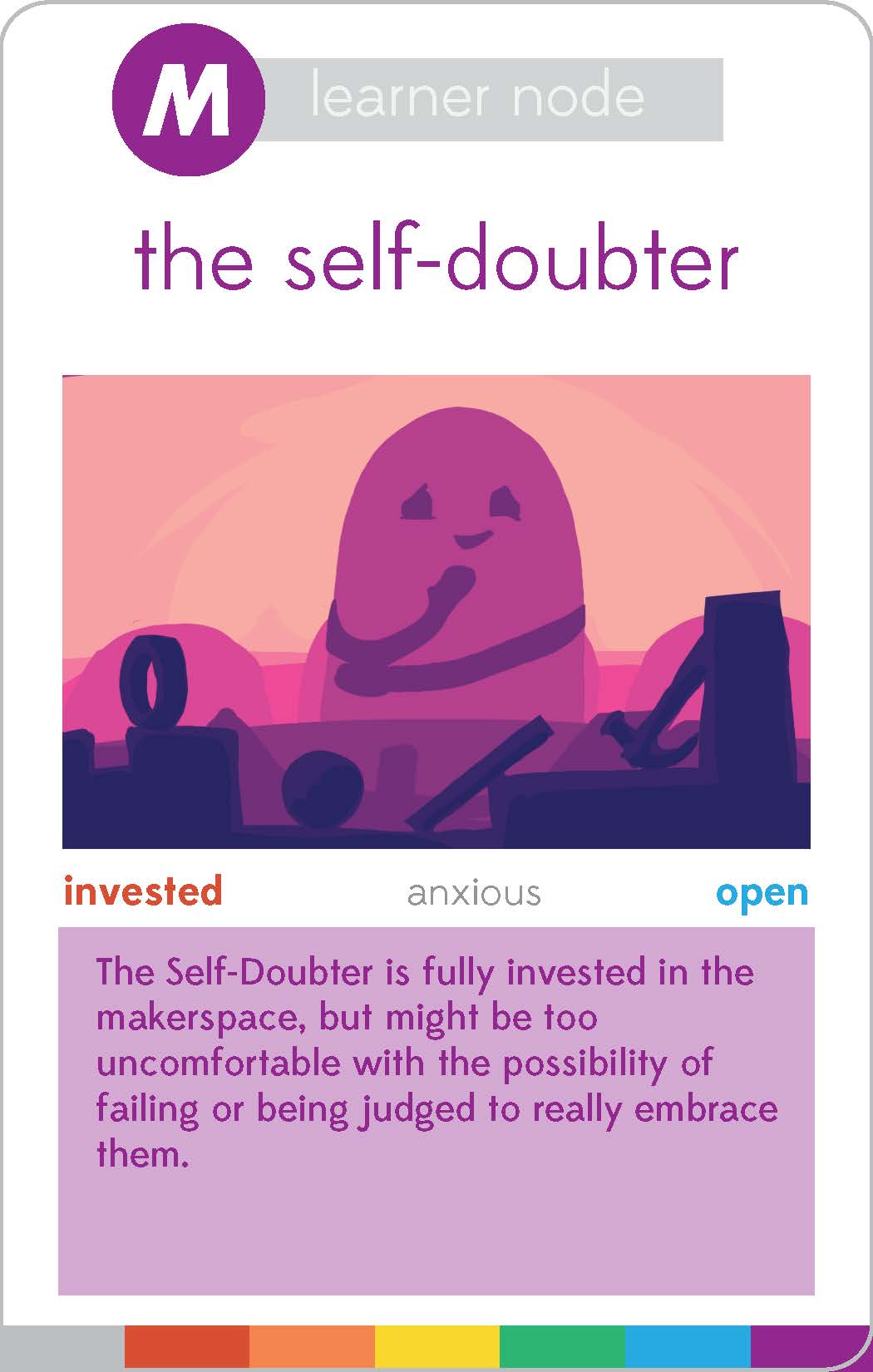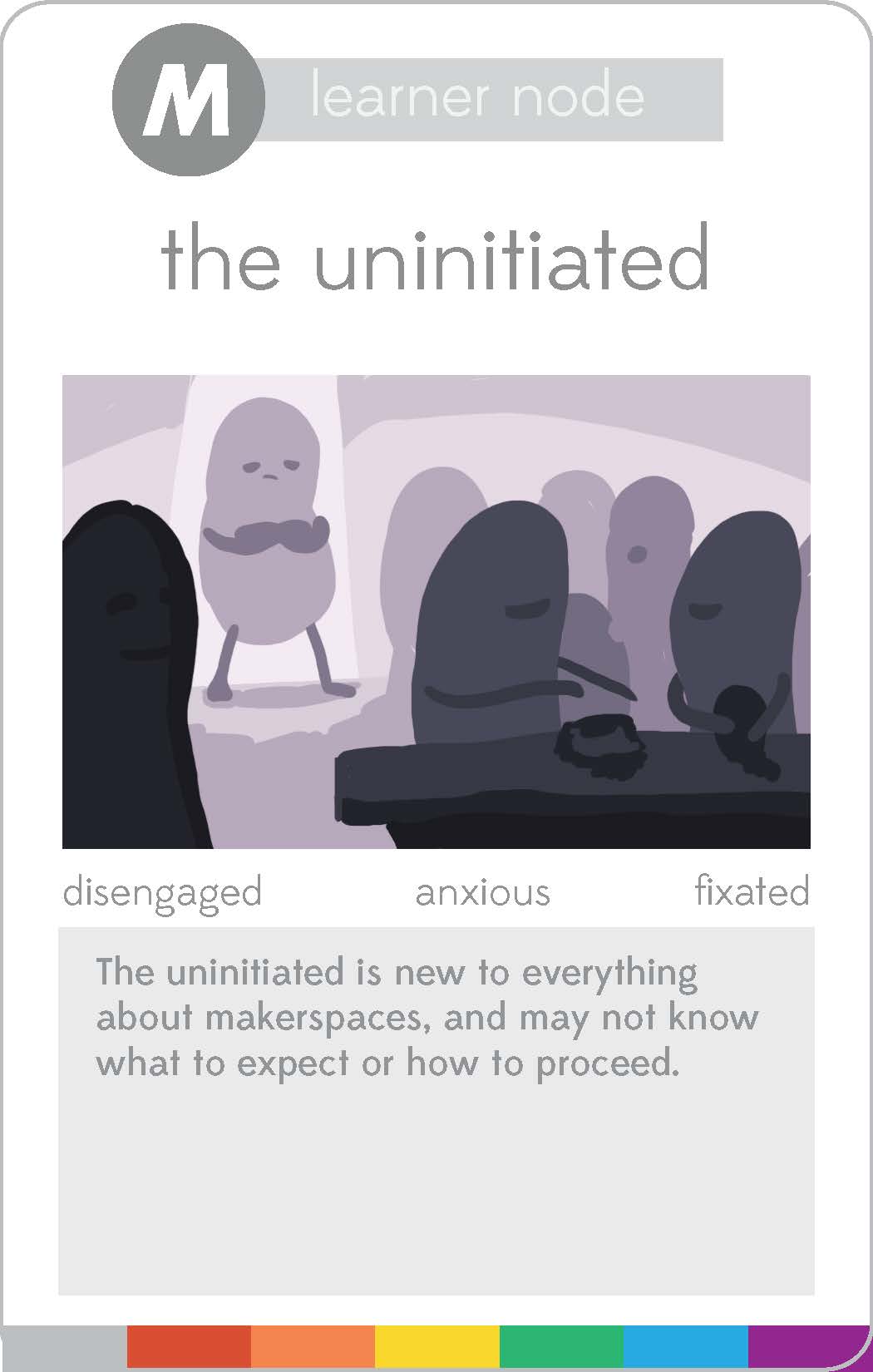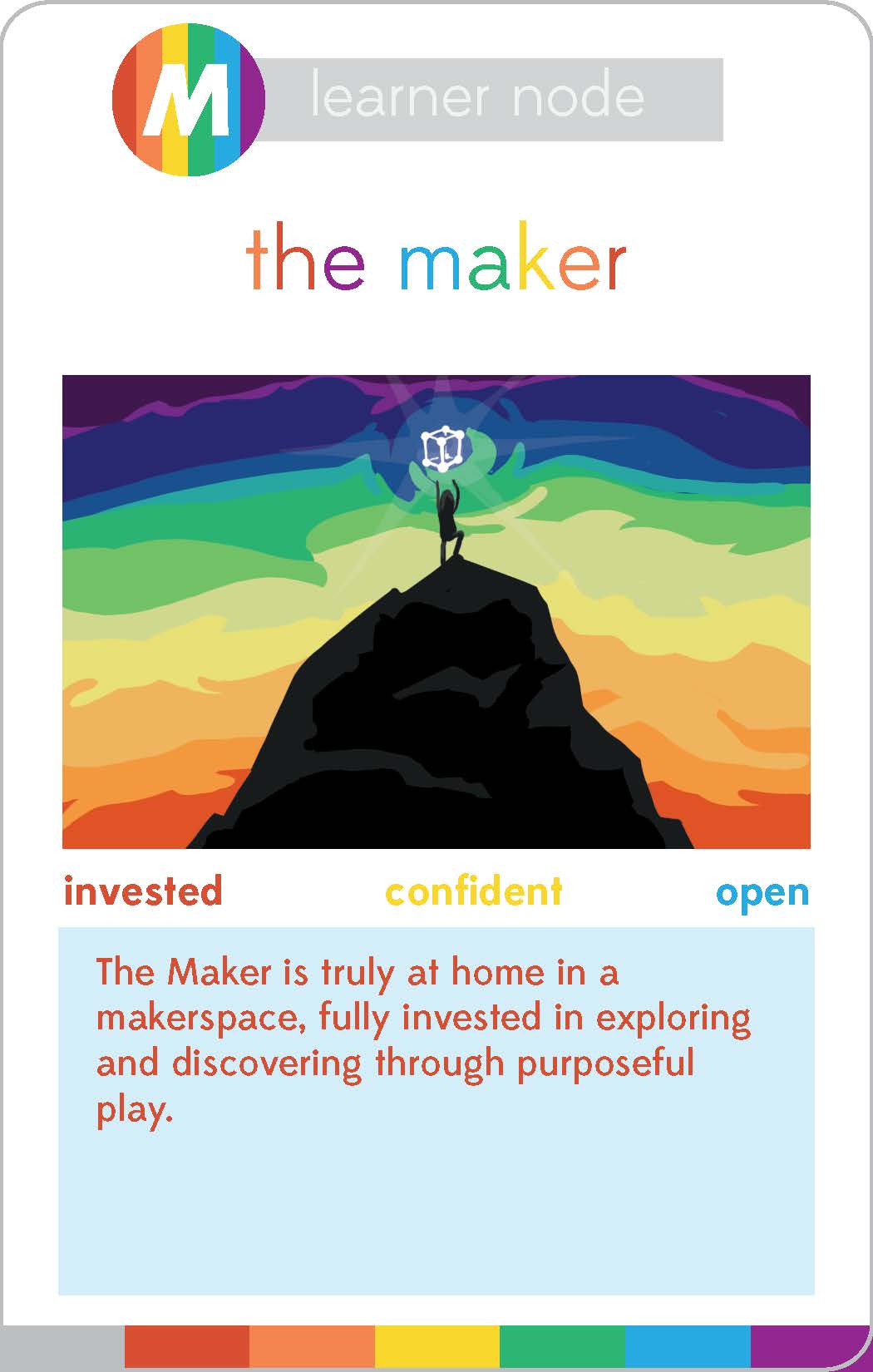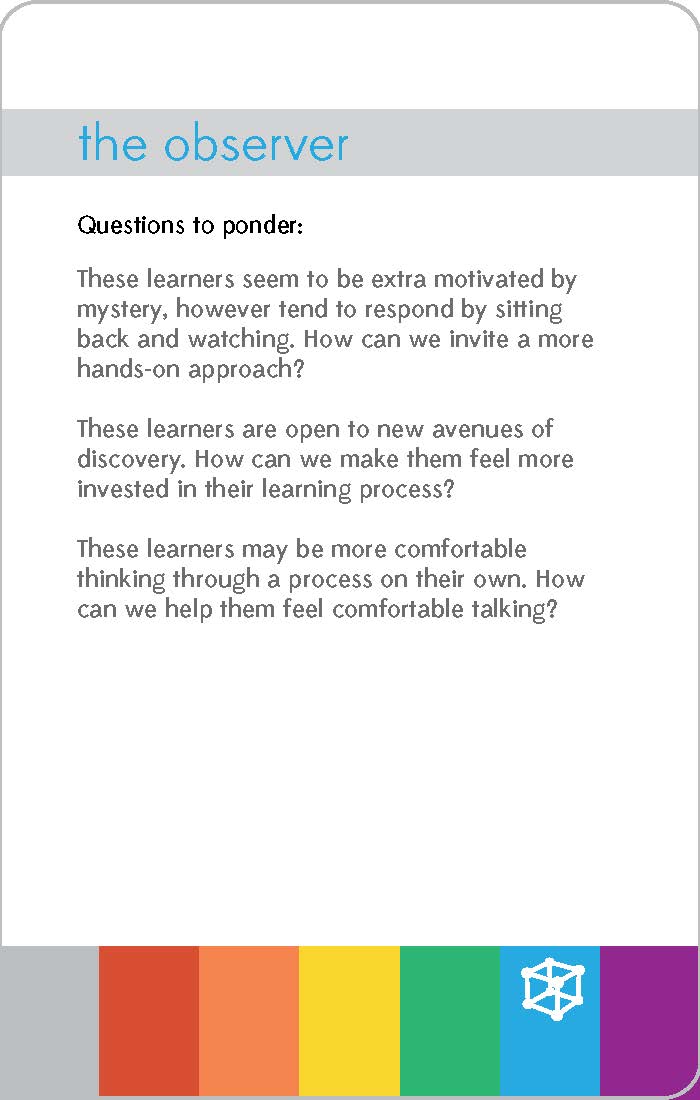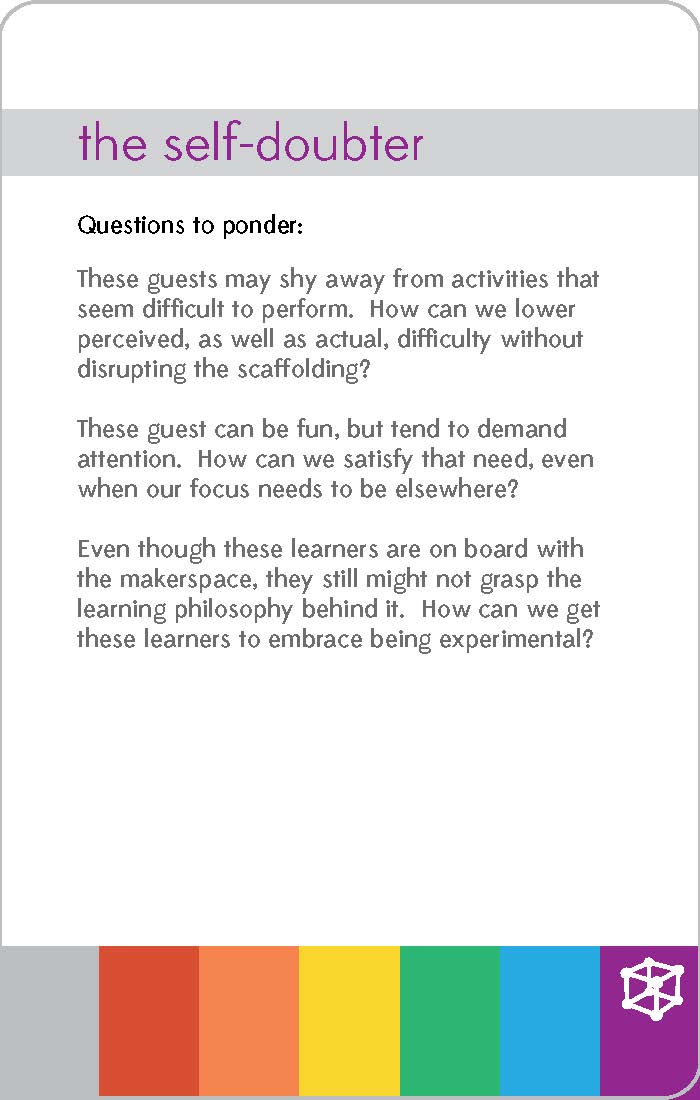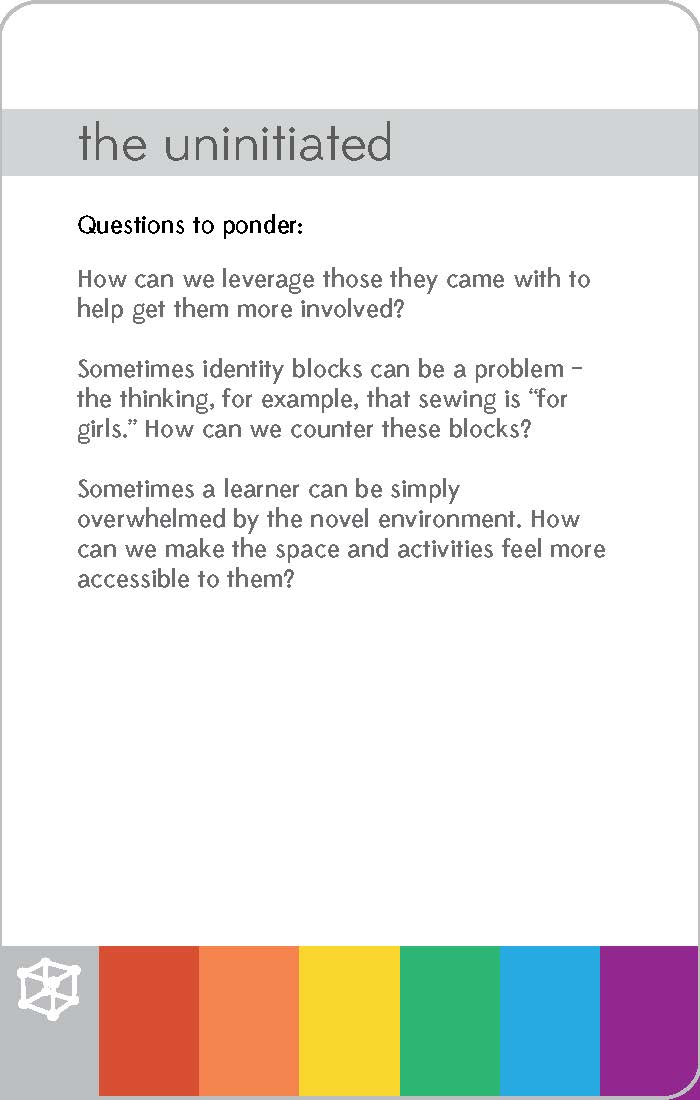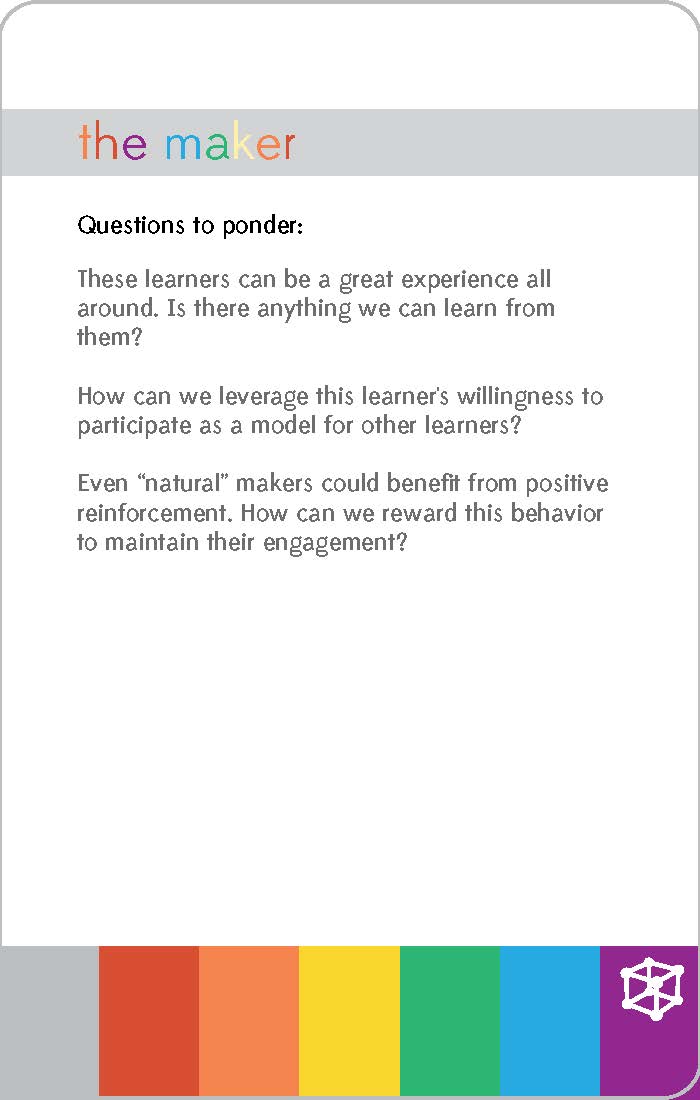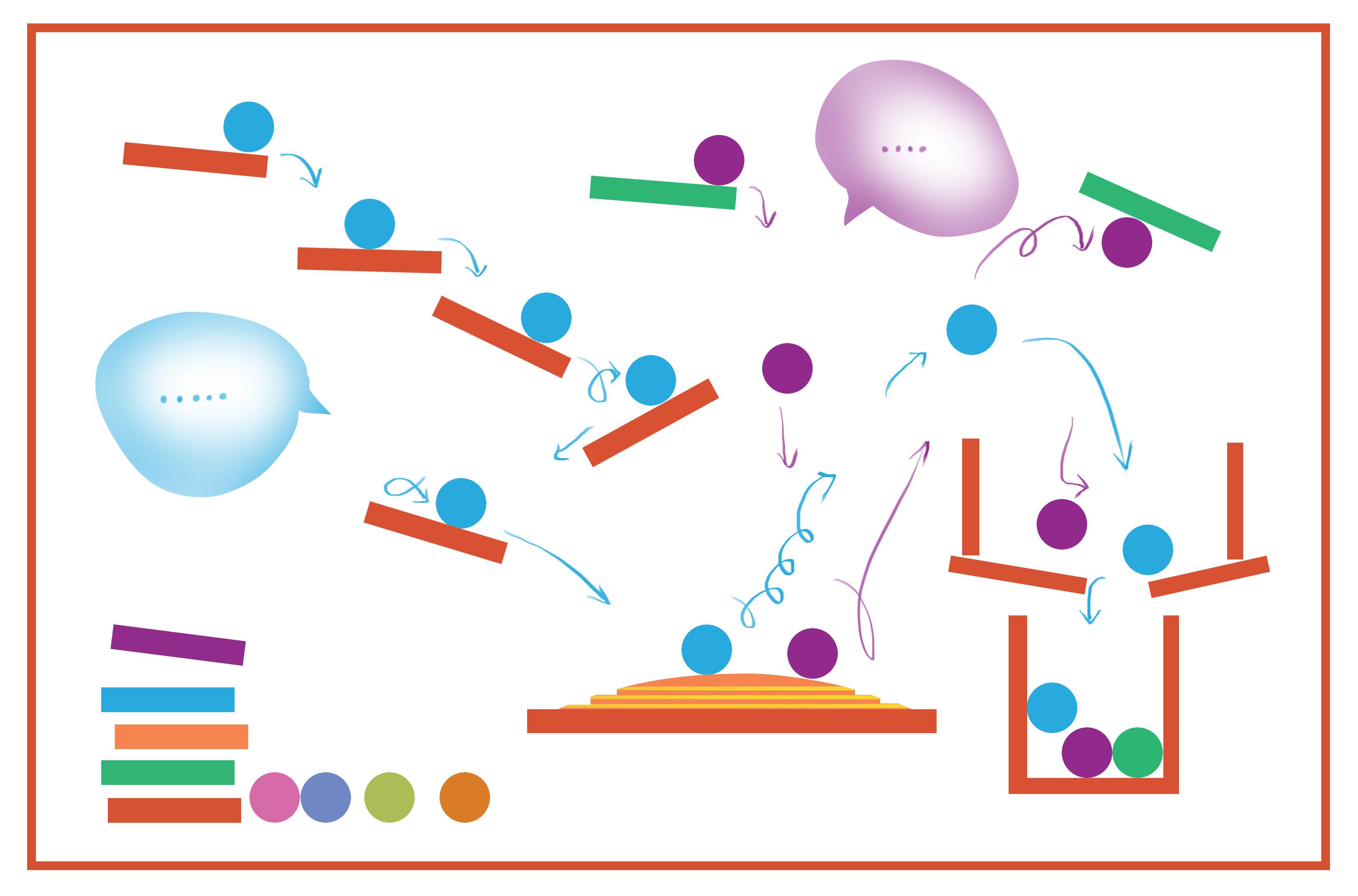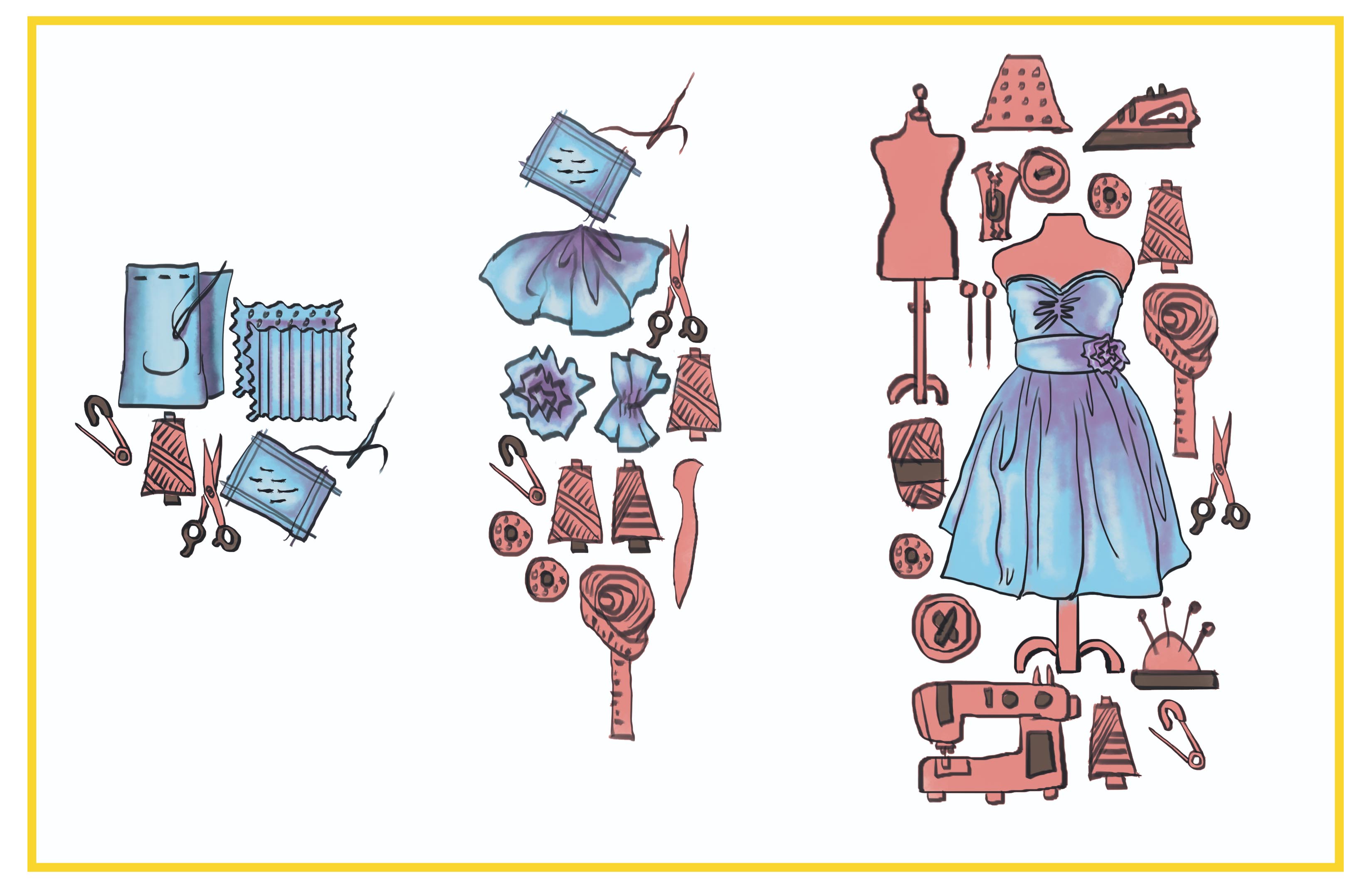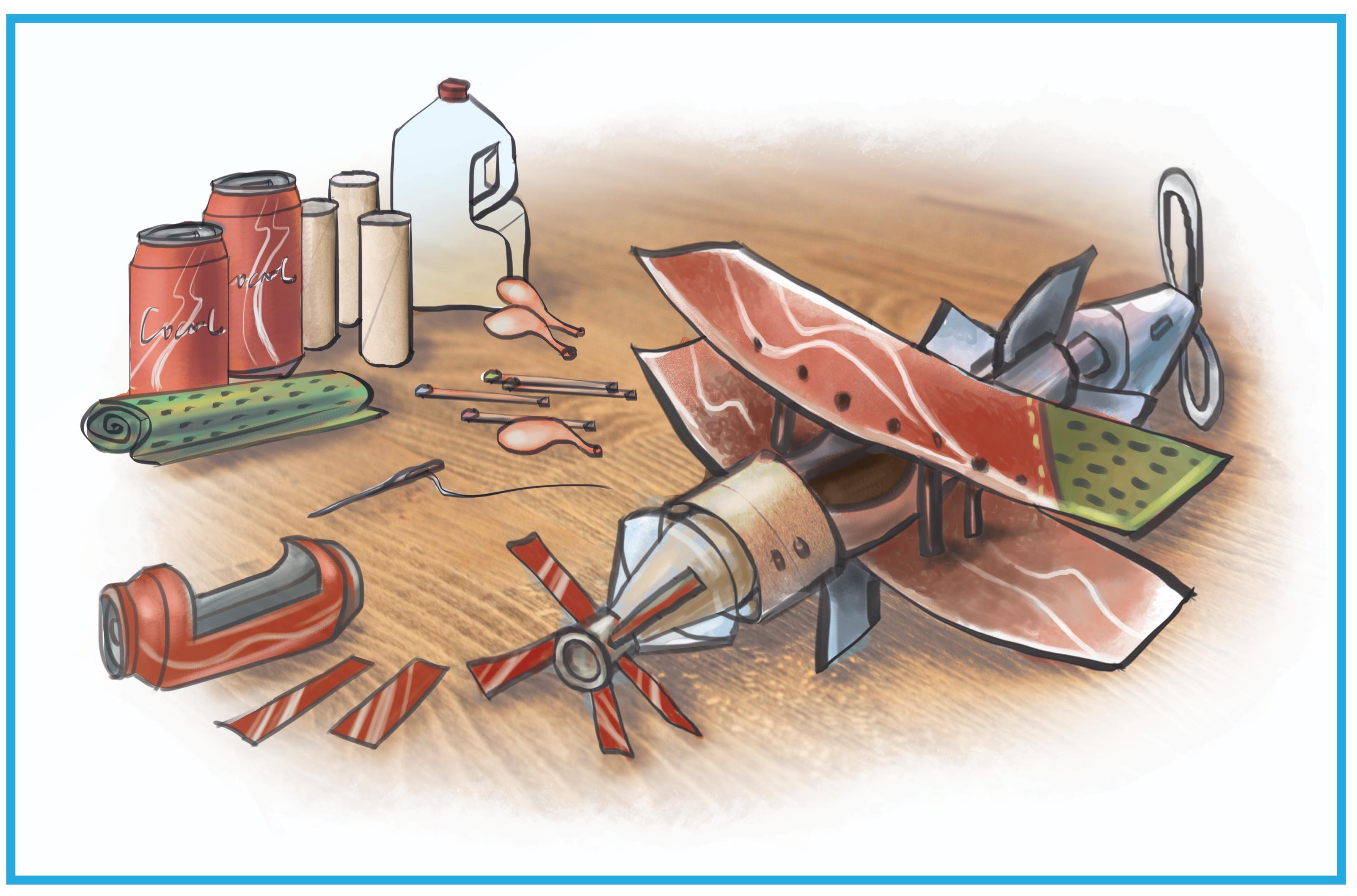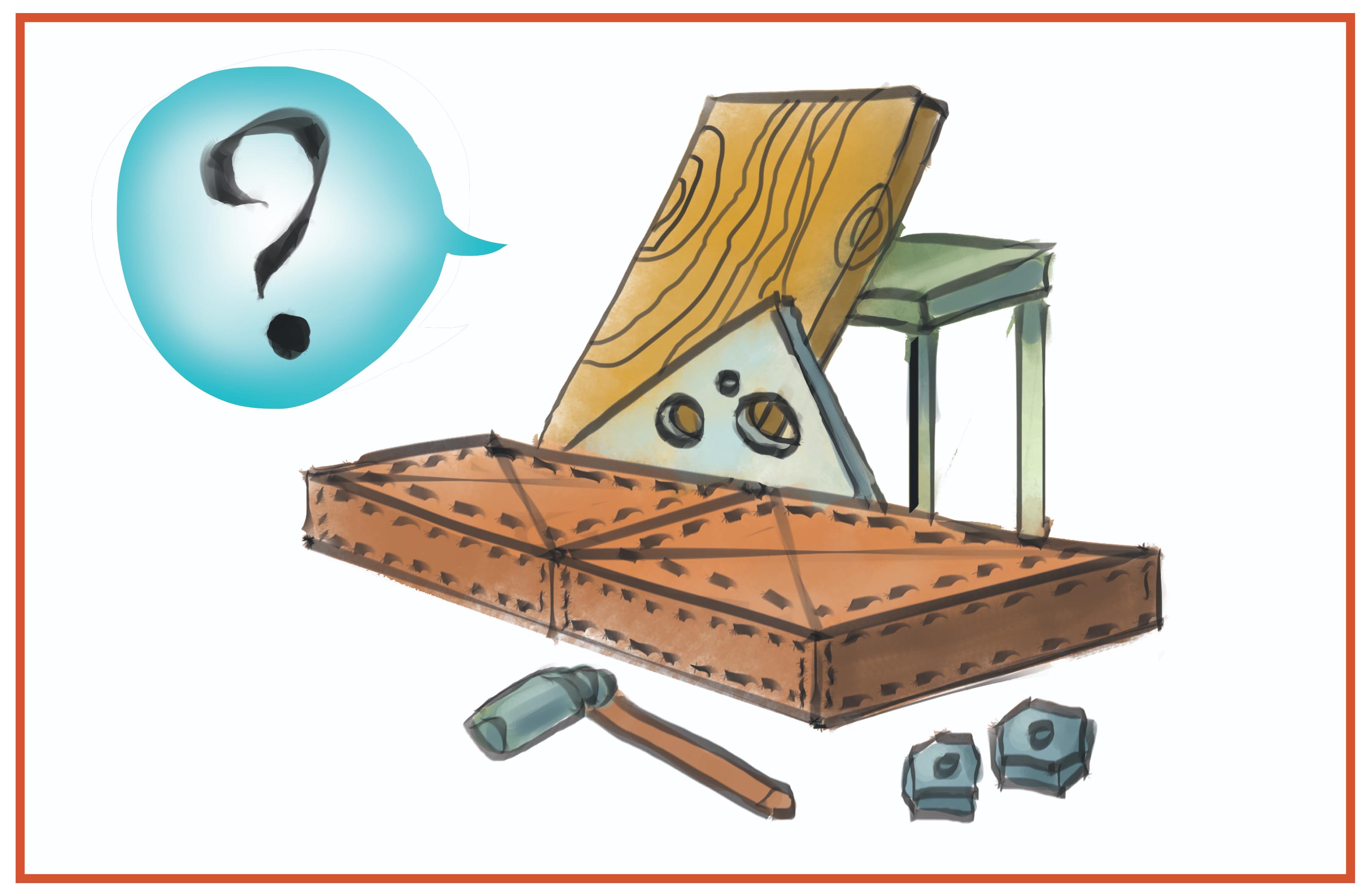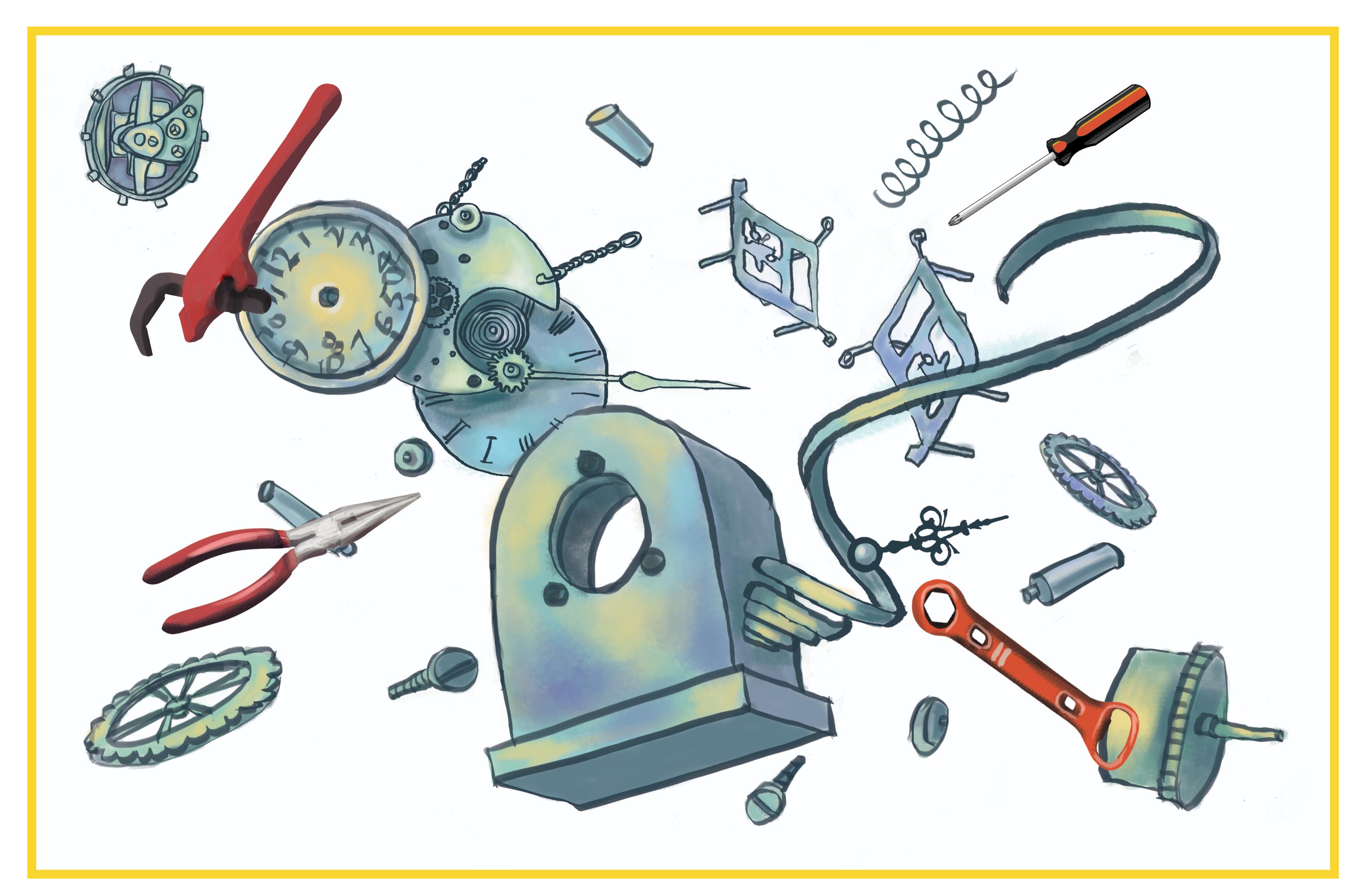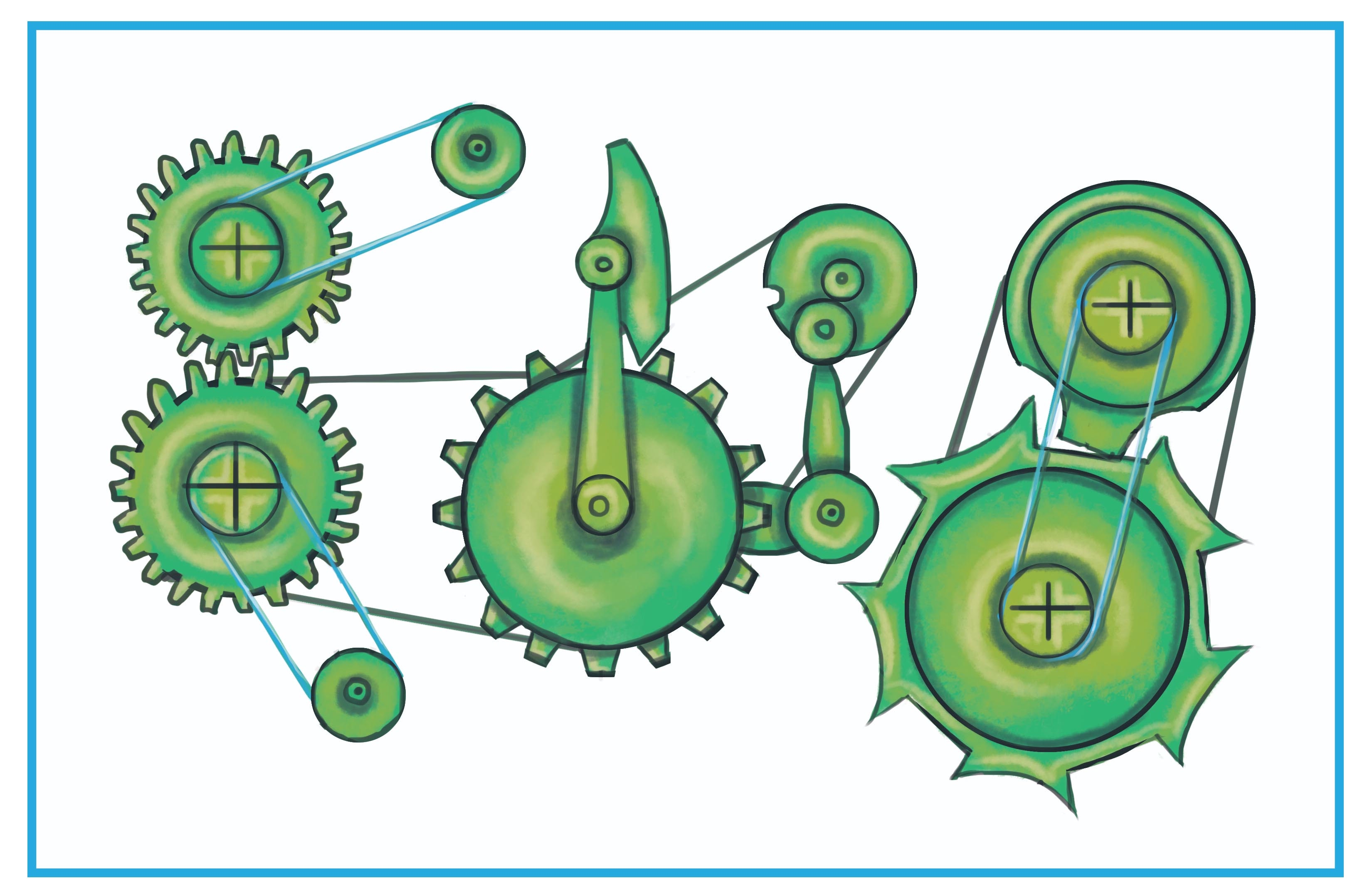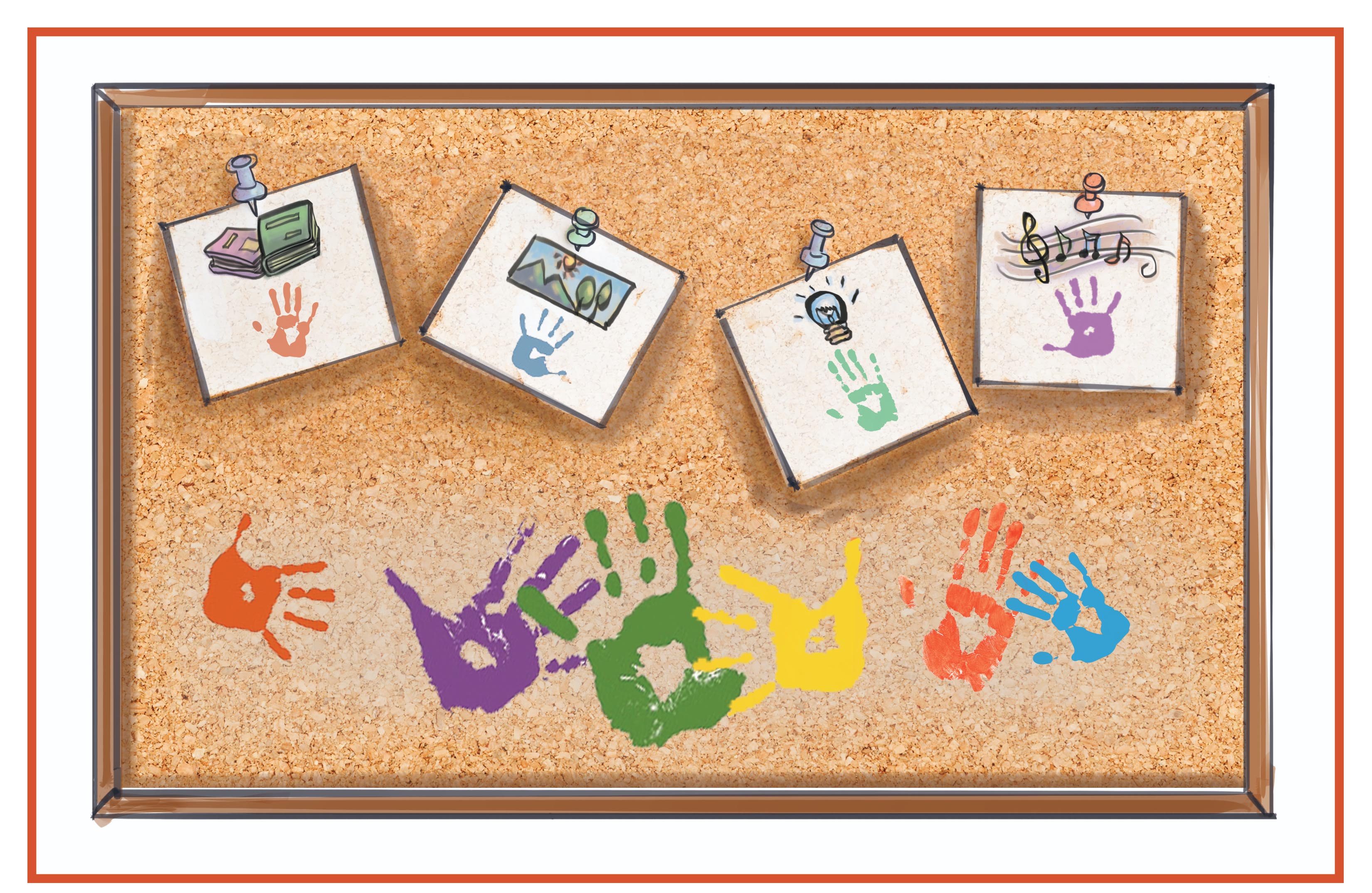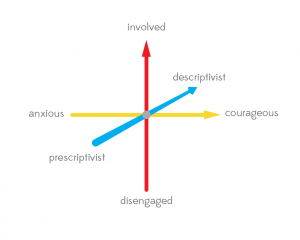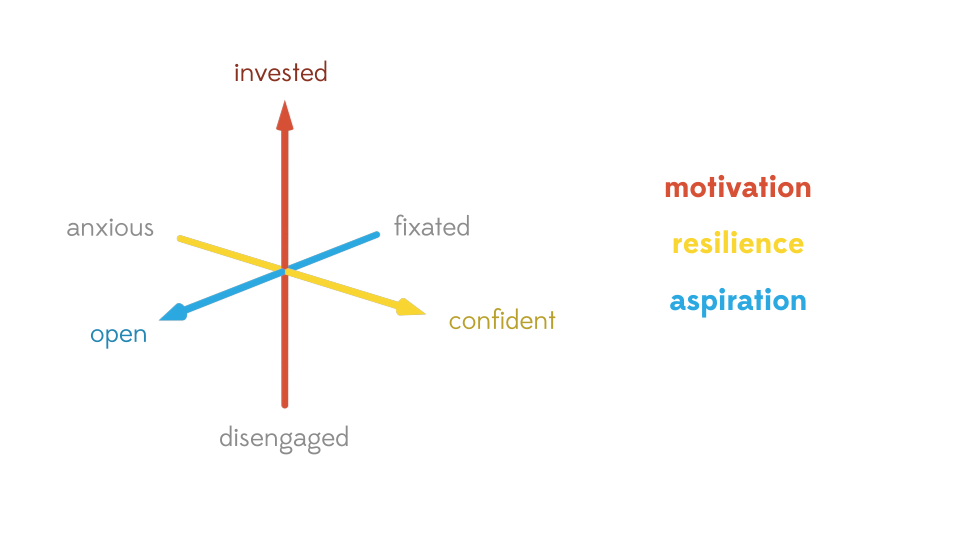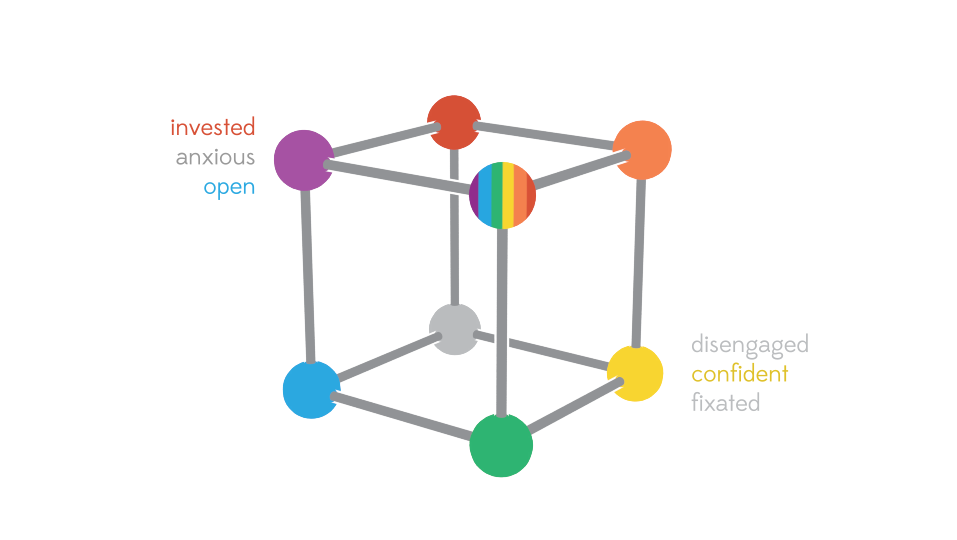Softs is this week which means last week was mainly spent getting the card deck part of our deliverable into a beta version.
The deck of cards are currently in a workable state, but require a refinement pass for the layout and content. We have three sections to the deck; Learner Node, Principles of Practice, and Inspiration Cards. The team borrowed the Principles of Practice directly from the museum and can be found at this link: http://makeshoppgh.com/resources/make-a-makerspace/. All content, illustrations, and layout have been produced, tested, and fixed. Any changes made after this point would mainly have to do with specific wording, color correction, and/or adding team/museum logos.
Learner Nodes:
Principles of Practice (Illustrations):
Guidelines to be used with the card deck are nearly finished. We are aiming for our guidelines to be suggestive in wording rather than actual directions as we have found that concrete solutions do not fit in with the MAKESHOP’s constant evolutionary-based culture. This document will include:
- an introduction to cube and how the cards fit in
- The goal for which the cube and cards were created to help with
- Suggestions on how to possibly use the cards and topics to think about
There have been suggestions by faculty to produce possible packaging and marketing materials for these cards to further the partnership between the MAKESHOP and team Aresteia. We have decided to produce a quick paper web-page mock up for the museum’s website showcasing our deliverable, as well as box mock up for the card deck. The aim of the website would be to mainly discuss the cards and how other makerspaces could use them as a tool. This will also serve as a possible marketing tool as the MAKESHOP often goes to other makerspaces to give talks and may use the tools we give them. The mockup will serve as an extra that will be finished by finals week.
Our stat analysis and ground truth show that our cube has promise and the results have been well-received by both our clients and the ETC faculty. The language for the cube has been changed to better reflect our ideas and findings from our surveys, as well as to communicate them to the Teaching Artists during the workshop. In the realm of scientific research, one could always collect more data, however the team sees no further iterations or further proof needed for this part of our deliverable at this point. Instead, what we have now will be given to the museum as a set-up for further research should they choose to continue it.
Before:
After:
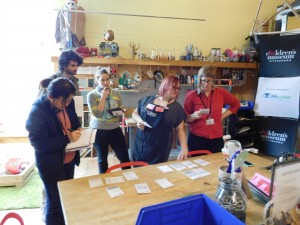 For the workshop, we have been researching facilitation methods and sought the help of several ETC faculty members (Jessica Hammer, Brenda Harger, and David Culyba) for suggestions on how to format it. We have decided to format it closely to a co-design workshop, as we feel this is the best way to get the Teaching Artists to use the cards as a tool and brainstorm solutions from them. We are aiming for them to get six things from this workshop:
For the workshop, we have been researching facilitation methods and sought the help of several ETC faculty members (Jessica Hammer, Brenda Harger, and David Culyba) for suggestions on how to format it. We have decided to format it closely to a co-design workshop, as we feel this is the best way to get the Teaching Artists to use the cards as a tool and brainstorm solutions from them. We are aiming for them to get six things from this workshop:
- Identify common guest behaviors
- Think of guests as “moveable”
- Build a common language for guest behavior
- Empathize with guests
- Share facilitation strategies
- Brainstorm new facilitation strategies
The main challenge with designing this workshop is that the Teaching Artists’ schedule is hectic and often changes at the drop of a hat. We would have anywhere from thirty to forty five minutes at the most to fit this into their work day. To account for this, we are preparing activities that would fit in either scenario (our card playtests with the Teaching Artists suggest card games may be the best way to go about this) and condensing the bulk of card and cube theory explanations down to ten minutes.
During softs week, our goal is to finish the bulk of “polishing” our deliverable, and finish the planning of the workshop. The addition of the website mock up will be worked on as well. On the side, we will also be finalizing our website (videos, blog, etc.) for archiving purposes.

